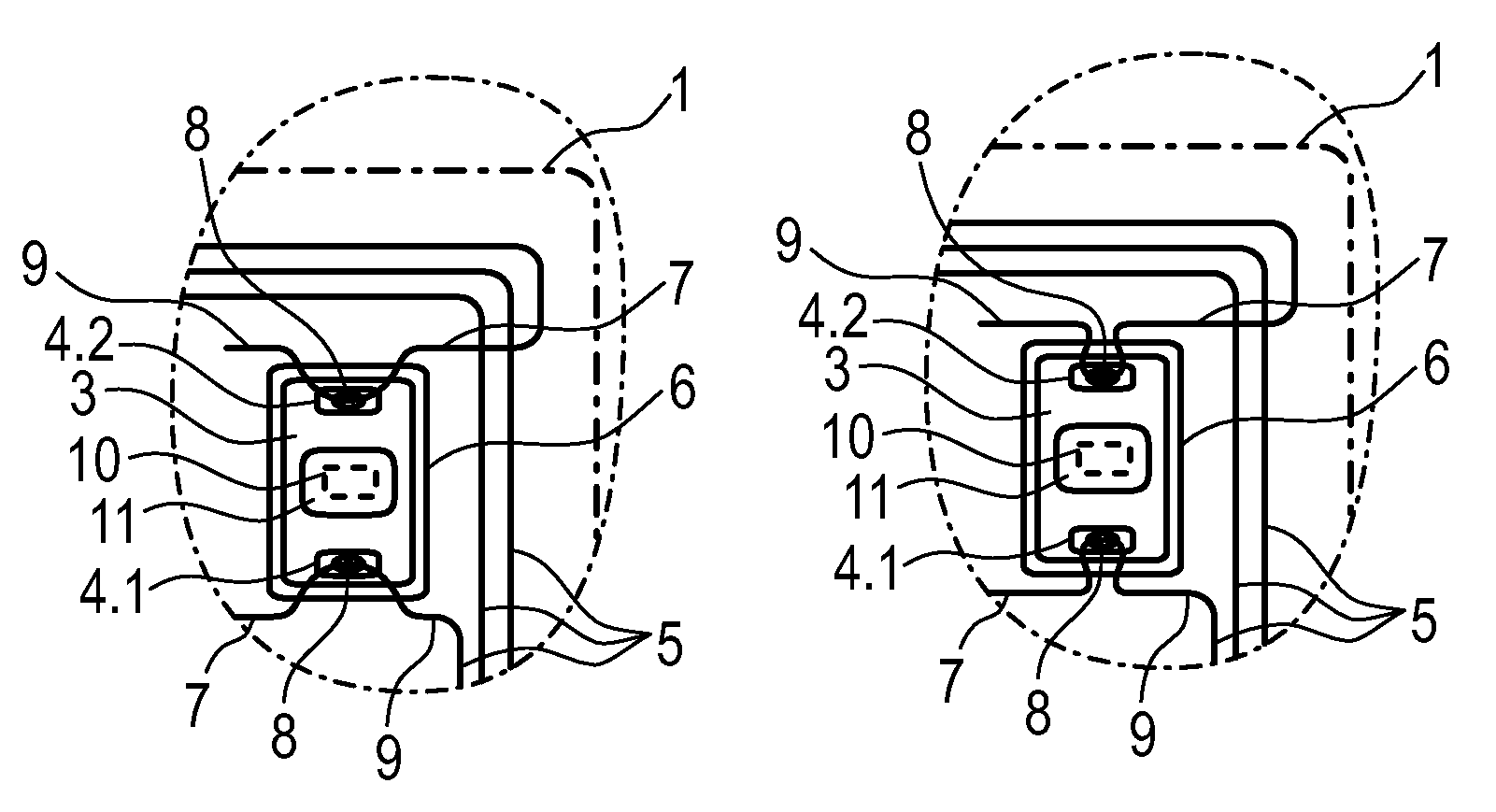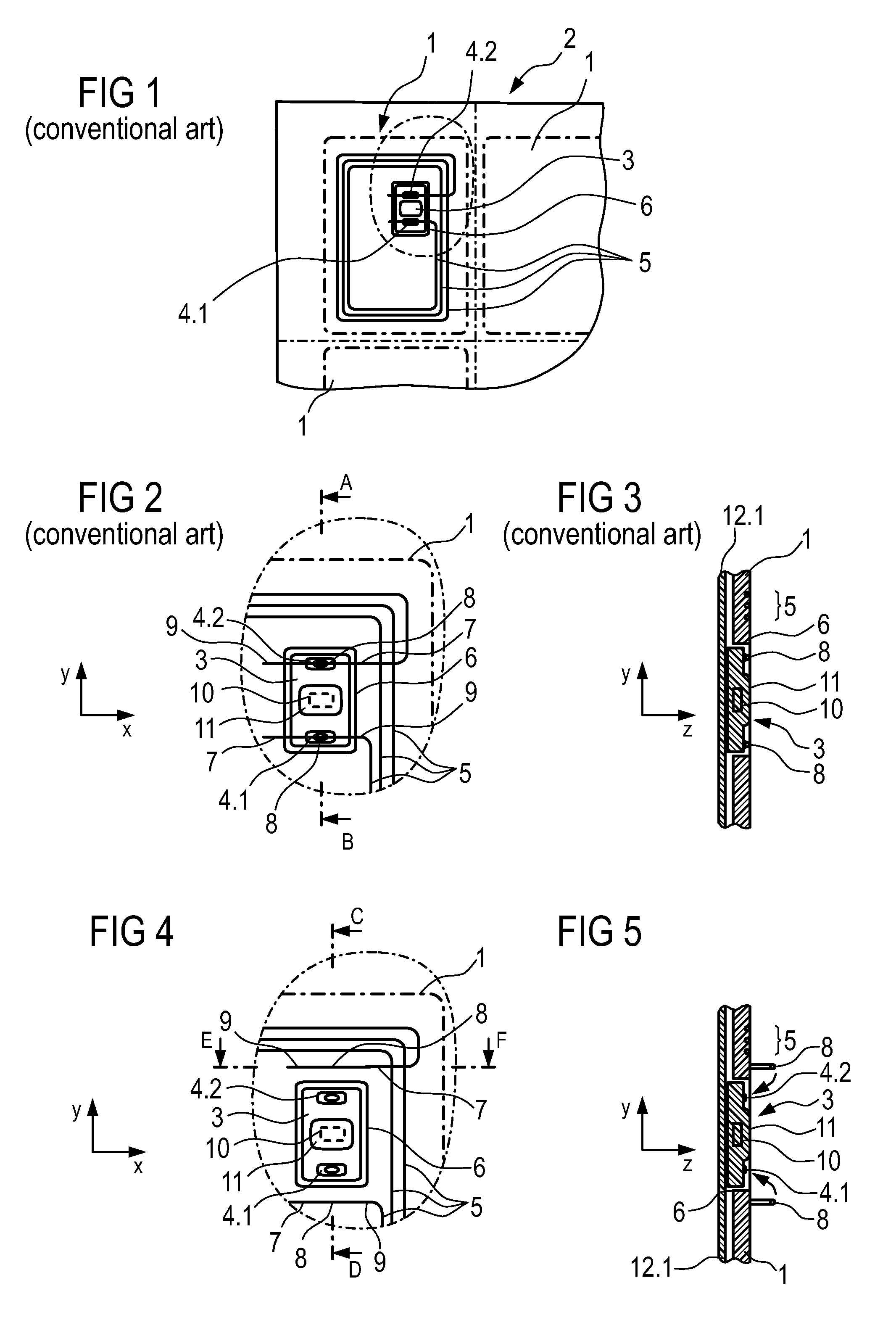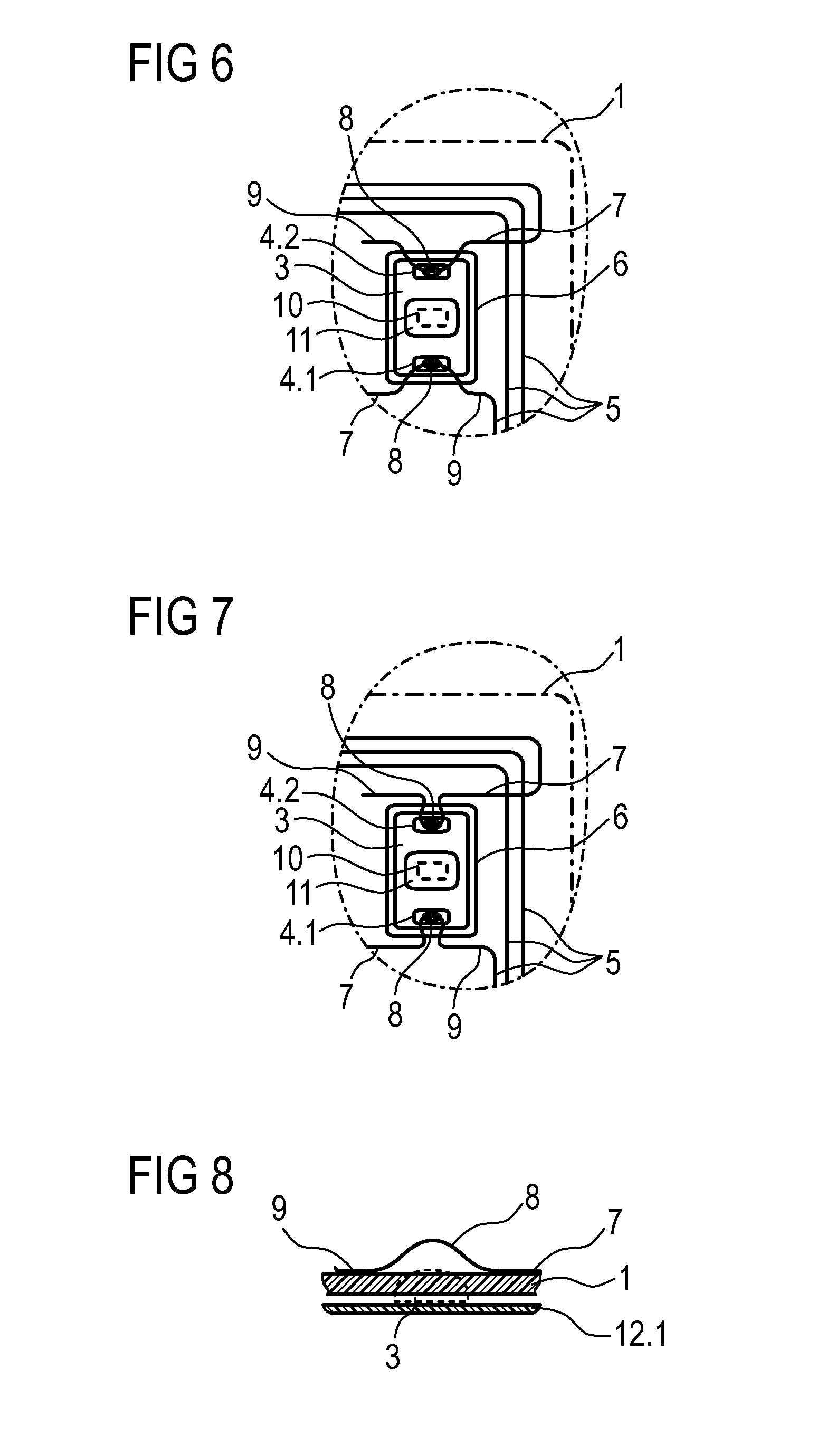Method and arrangement for producing a smart card
a smart card and arrangement technology, applied in the direction of antennas, antenna adaptation in movable bodies, electromagnets, etc., can solve the problems of only testing the wire connectors or antenna coils of a smart card produced according to a conventional method, and is much more expensive than substrates and antenna coils, so as to achieve less mechanical stress
- Summary
- Abstract
- Description
- Claims
- Application Information
AI Technical Summary
Benefits of technology
Problems solved by technology
Method used
Image
Examples
Embodiment Construction
[0033]FIG. 1 is a top view of a substrate 1 of a smart card, which can be one of a multitude of segments of a multi-image-board 2. The smart card 1 comprises a chip module 3 with two contacting areas 4.1, 4.2 and a wire connector 5 in the shape of an antenna coil arranged around the chip module 3. The wire connector 5 is laid, attached and contacted. The chip module 3 is attached on the substrate 1 in a mounting location 6, which may be designed as a recess in the substrate 1. For producing the smart card, the substrate 1, which can also be in single-image-format, is placed on a bench. The chip module 3 is arranged in the mounting location 6 with the contacting areas 4.1, 4.2 up. If the mounting location 6 is a recess in the form of an aperture, the chip module 3 may be fixed by a vacuum from below or by attaching it to an additional film (not shown) that is arranged below the substrate 1.
[0034]The wire connector 5 is attached to a surface of the substrate 1 or at least partially em...
PUM
| Property | Measurement | Unit |
|---|---|---|
| thickness | aaaaa | aaaaa |
| contacting area | aaaaa | aaaaa |
| areas | aaaaa | aaaaa |
Abstract
Description
Claims
Application Information
 Login to View More
Login to View More - R&D
- Intellectual Property
- Life Sciences
- Materials
- Tech Scout
- Unparalleled Data Quality
- Higher Quality Content
- 60% Fewer Hallucinations
Browse by: Latest US Patents, China's latest patents, Technical Efficacy Thesaurus, Application Domain, Technology Topic, Popular Technical Reports.
© 2025 PatSnap. All rights reserved.Legal|Privacy policy|Modern Slavery Act Transparency Statement|Sitemap|About US| Contact US: help@patsnap.com



